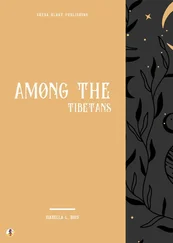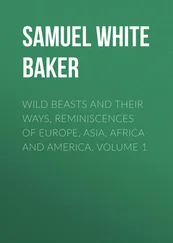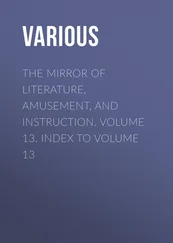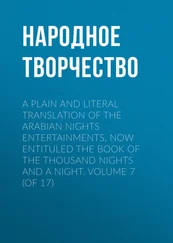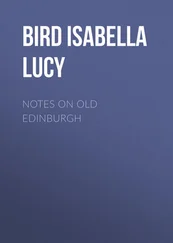Isabella Bird - Journeys in Persia and Kurdistan, Volume 1 (of 2)
Здесь есть возможность читать онлайн «Isabella Bird - Journeys in Persia and Kurdistan, Volume 1 (of 2)» — ознакомительный отрывок электронной книги совершенно бесплатно, а после прочтения отрывка купить полную версию. В некоторых случаях можно слушать аудио, скачать через торрент в формате fb2 и присутствует краткое содержание. ISBN: , Жанр: foreign_language, foreign_antique, foreign_prose, Путешествия и география, на английском языке. Описание произведения, (предисловие) а так же отзывы посетителей доступны на портале библиотеки ЛибКат.
- Название:Journeys in Persia and Kurdistan, Volume 1 (of 2)
- Автор:
- Жанр:
- Год:неизвестен
- ISBN:http://www.gutenberg.org/ebooks/38827
- Рейтинг книги:4 / 5. Голосов: 1
-
Избранное:Добавить в избранное
- Отзывы:
-
Ваша оценка:
- 80
- 1
- 2
- 3
- 4
- 5
Journeys in Persia and Kurdistan, Volume 1 (of 2): краткое содержание, описание и аннотация
Предлагаем к чтению аннотацию, описание, краткое содержание или предисловие (зависит от того, что написал сам автор книги «Journeys in Persia and Kurdistan, Volume 1 (of 2)»). Если вы не нашли необходимую информацию о книге — напишите в комментариях, мы постараемся отыскать её.
Journeys in Persia and Kurdistan, Volume 1 (of 2) — читать онлайн ознакомительный отрывок
Ниже представлен текст книги, разбитый по страницам. Система сохранения места последней прочитанной страницы, позволяет с удобством читать онлайн бесплатно книгу «Journeys in Persia and Kurdistan, Volume 1 (of 2)», без необходимости каждый раз заново искать на чём Вы остановились. Поставьте закладку, и сможете в любой момент перейти на страницу, на которой закончили чтение.
Интервал:
Закладка:
The Arab moves as if he were the ruler of the country, though the grip of the Osmanli may be closing on him. His eyes are deeply set under shaggy eyebrows, his nose is high and sharp, he is long and thin, his profile suggests a bird of prey, and his demeanour a fierce independence.
The Arab women go about the streets unveiled, and with the abba covering their very poor clothing, but it is not clutched closely enough to conceal the extraordinary tattooing which the Bedouin women everywhere regard as ornamental. There are artists in Baghdad who make their living by this mode of decorating the person, and vie with each other in the elaboration of their patterns. I saw several women tattooed with two wreaths of blue flowers on their bosoms linked by a blue chain, palm fronds on the throat, stars on the brow and chin, and bands round the wrists and ankles. These disfigurements, and large gold or silver filigree buttons placed outside one nostril by means of a wire passed through it, worn by married women, are much admired. When these women sell country produce in the markets, they cover their heads with the ordinary chadar .
The streets are narrow, and the walls, which are built of fire-burned bricks, are high. Windows to the streets are common, and the oriel windows, with their warm brown lattices projecting over the roadways at irregular heights, are strikingly picturesque. Not less so are latticework galleries, which are often thrown across the street to connect the two houses of wealthy residents, and the sitting-rooms with oriel windows, which likewise bridge the roadways. Solid doorways with iron-clasped and iron-studded doors give an impression of security, and suggest comfort and to some extent home life, and sprays of orange trees, hanging over walls, and fronds of date palms give an aspect of pleasantness to the courtyards.
The best parts of the city, where the great bazars, large dwelling-houses, and most of the mosques are, is surrounded by a labyrinth of alleys, fringing off into streets growing meaner till they cease altogether among open spaces, given up to holes, heaps, rubbish, the slaughter of animals, and in some favoured spots to the production of vegetables. Then come the walls, which are of kiln-burned bricks, and have towers intended for guns at intervals. The wastes within the walls have every element of decay and meanness, the wastes without, where the desert sands sweep up to the very foot of the fortifications, have many elements of grandeur.
Baghdad is altogether built of chrome-yellow kiln-dried bricks. There are about twenty-five kilns, chiefly in the hands of Jews and Christians in the wastes outside the city, but the demand exceeds the supply, not for building only, but for the perpetual patchings which houses, paths, and walls are always requiring, owing to the absorption of moisture in the winter.
Bricks at the kilns sell for 36s. per thousand twelve inches square, and 18s. per thousand seven inches square. They are carried from the kilns on donkeys, small beasts, each taking ten large or twenty-five small bricks.
Unskilled labour is abundant. Men can be engaged at 9d. a day, and boys for 5d.
This afternoon, in the glory of a sunset which reddened the yellow waste up to the distant horizon, a caravan of mules, mostly in single file, approached the city. Each carried two or four white bales slung on his sides, or two or more long boxes, consisting of planks roped rather than nailed together. This is the fashion in which thousands of Persian Moslems (Shiahs or "Sectaries") have been conveyed for ages for final burial at Kerbela, the holiest place of the Shiahs, an easy journey from Baghdad, where rest the ashes of Ali, regarded as scarcely second to Mohammed, and of Houssein and Hassan his sons, whose "martyrdom" is annually commemorated by a Passion Play which is acted in every town and village in Persia. To make a pilgrimage to Kerbela, or to rest finally in its holy dust, or both, constitutes the ambition of every Shiah. The Sunnis, or "Orthodox," who hate the Shiahs, are so far kept in check that these doleful caravans are not exposed to any worse molestation than the shouts and ridicule of street Arabs.
The mode of carrying the dead is not reverent. The katirgis , who contract for the removal, hurry the bodies along as goods, and pile them in the yards of the caravanserais at night, and the mournful journey is performed, oftener than not, without the presence of relations, each body being ticketed with the name once borne by its owner. Some have been exhumed and are merely skeletons, others are in various stages of decomposition, and some are of the newly dead. 6 6 I heard that the Shah had prohibited this "Dead March" to Kerbela, on account of the many risks to the public health involved in it, but nearly a year later, in Persian Kurdistan, I met, besides thousands of living pilgrims, a large caravan of the dead.
Outside the walls predatory Arabs render the roads unsafe for solitary travellers, and at times for feeble caravans; but things in this respect are better than they were.
Visits to the Armenian and Chaldæan Churches, to the Mosque of Abdel Kader, with its courts thronged by Afghan pilgrims, and to the Jewish quarter, have been very interesting. There are said to be 30,000 Jews here, and while a large proportion of them are in poverty, on the whole they are an influential nationality, and some of them are very rich.
Through the liberality of Sir Albert Sassoon a Jewish High School has been opened, where an admirable education is given. I was extremely pleased with it, and with the director, who speaks French fluently, and with the proficiency in French of the elder students. He describes their earnestness and energetic application as being most remarkable.
The French Carmelite monks have a large, solid "Mission Church" or Cathedral with a fine peal of bells, and a very prosperous school attached, in which are boys belonging to all the many creeds professed in Baghdad. The sisters of St. Joseph have a school for girls, which Turkish children are not slow to avail themselves of. The sisters find a remarkable unhandiness among the women. Few, if any, among them have any idea of cutting out or repairing, and rich and poor are equally incapable of employing their fingers usefully.
The people here are so used to the sight of Europeans that it is quite easy for foreign ladies to walk in this quarter only attended by a servant, and I have accompanied Mrs. Sutton on visits to several Armenian houses. The Armenians are in many cases wealthy, as their admirably-designed and well-built houses testify. The Christian population is estimated at 5000, and its wealth and energy give it greater importance than its numbers warrant. One of the houses which we visited was truly beautiful and in very good taste, the solidity of the stone and brickwork, the finish of the wood, and the beauty of the designs and their execution in hammered iron being quite remarkable. The lofty roofs and cornices are elaborately worked in plaster, and this is completely concealed by hundreds or thousands of mirrors set so as to resemble facets, so that roof and cornices flash like diamonds. This is a Persian style of decoration, and is extremely effective in large handsome rooms. Superb carpets and divans and tea tables inlaid with mother-of-pearl furnish the reception and smoking rooms, and the bedrooms and nurseries over which we were taken were simply arranged with French bedsteads and curtains of Nottingham mosquito net. As in other Eastern houses, there were no traces of occupation, no morning room or den sacred to litter; neither was there anything to look at – the opposite extreme from our overloaded drawing-rooms – or any library. Cigarettes and black coffee in minute porcelain cups, in gold filigree receptacles, were presented on each occasion, and the kind and courteous intention was very pleasing.
Читать дальшеИнтервал:
Закладка:
Похожие книги на «Journeys in Persia and Kurdistan, Volume 1 (of 2)»
Представляем Вашему вниманию похожие книги на «Journeys in Persia and Kurdistan, Volume 1 (of 2)» списком для выбора. Мы отобрали схожую по названию и смыслу литературу в надежде предоставить читателям больше вариантов отыскать новые, интересные, ещё непрочитанные произведения.
Обсуждение, отзывы о книге «Journeys in Persia and Kurdistan, Volume 1 (of 2)» и просто собственные мнения читателей. Оставьте ваши комментарии, напишите, что Вы думаете о произведении, его смысле или главных героях. Укажите что конкретно понравилось, а что нет, и почему Вы так считаете.


